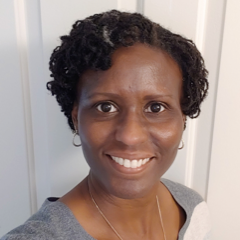Physicians play a multitude of roles in pharmaceutical development. Not all come from academia; many started out in clinical practice. I was in a private Ob/Gyn practice for a dozen years before I decided I wanted a change. I studied my options and decided to pursue a career in the pharmaceutical industry. The short story is that I was able to leverage some pharmaceutical consulting experience and professional connections into a position with a contract research organization, a company that conducts clinical trials on behalf of pharmaceutical companies. My current job encompasses a broad range of responsibilities: serving as the medical monitor for clinical trials, performing safety surveillance for clinical trials, working as part of a team developing new trials and even assisting business development in selling our services to future clients. The change from clinical practice has been a dramatic one for me (just what I wanted) and there has been a steep learning curve which has not yet plateaued, even after seven years! Every day brings new and exciting challenges. I love it.
Many of my colleagues have asked me how I made this transition. My own path was a winding one and would probably not serve as a map for anyone else. However, knowing what I now know, I can provide some practical advice and actionable steps that a physician can take to steer their career toward opportunities in pharmaceutical development. As you read these documents, remember that there were physicians involved in designing those studies, writing the protocols, training the physician investigators, conducting the trials, monitoring patient safety, and analyzing the data, writing the reports, and much, much more.
1. Learn about the clinical development process
A great first step in getting into clinical research is to learn as much as you can about the convoluted, arduous process of getting a new drug or to market. You are already familiar with clinical trials from reading medical journals, but keep in mind that those published papers are truly just summaries of the efficacy and safety data from one or a few clinical trials. To get a more in depth view into what an entire clinical development program looks like, the types and numbers of studies that are required prior to approval, and a better sense of the nitty gritty data that informed the published data, check out the regulatory reports that are produced with every new drug approval.
At Drugs@FDA.com http://www.accessdata.fda.gov/scripts/cder/drugsatfda/type in the name of a medication approved within the last 5 years ago. From the Drug Details page, click on the Approval History, Letters, Review, and Related Documents. There you will usually find the complete library of documents under Review as well as a slightly more compact Summary Review. Amongst the Review library, the Medical Review, is a terrific place to get the gory details on all the different clinical trials that were performed during that drug’s development. Look closely at the Sources of Clinical Data to get a “behind the scenes” look at the entire program.
2. Be an investigator
Acting as an investigator in industry sponsored clinical trials is the very best way to gain translatable pharmaceutical industry experience. You gain a working knowledge of the pharmaceutical development process that can be leveraged into other work in the industry. You don’t have to be in academics or working at a pharmaceutical company to do this. As a physician in clinical practice, you have this potential as well. Participating in clinical studies with your patients can be a part-time endeavor and be a great break from the routine of seeing patients. Some physicians make clinical research their full time job and run their own clinical research facilities or work for one. All agree that it is immeasurable satisfying to contribute to the development of new treatments for patients.
As an investigator you spend time assessing whether a patient meets the entry criteria for a trial. It is your responsibility to explain the trial to the patient and get their consent. Once a patient is entered into the study you see the patient periodically to assess whether the study drug is working and whether there are any adverse reactions that might be related to the study drug. You have to keep immaculate records on all of this work and will interact with study monitors who will visit to ensure you are adhering to the protocol and are accurately reporting the data. You will have access to a medical monitor, (another great industry job for physicians) who will serve as a resource person for questions about executing the trial. You may also have to answer to the medical monitor if you deviate from the protocol.
It can be really hard to get your first gig as an investigator since most pharmaceutical companies prefer to work with physicians who are experienced. One way to get your foot in the door is to act as a sub-investigator to a principal investigator in a clinical trial. As a sub-investigator you may be delegated to perform the duties of the principal investigator, particularly when the principal investigator is not available. Sub-investigators usually get paid but, if you really want to get your foot in the door, you could consider volunteering to fulfill this role for a trial or two in order to build your CV. Read on to get ideas on where to find opportunities as an investigator.
3. Check out who is performing clinical research in your area.
Find out what type of clinical trials are going on right now, particularly in your area. Go to https://clinicaltrials.gov and type in the name of conditions you commonly take care of to see which companies are developing products, what trials they are doing, and where the trials are being conducted. Look for trials in your geographic vicinity and reach out to the investigative sites for more information. This is a great networking opportunity. Talk to the principal investigator about the studies and their work. Do you have patients that may benefit from an opportunity to receive a new, cutting-edge treatment for their condition? Consider referring patients to the study and keep in touch with the investigator and your patient’s progress. Express interest in the clinical trial process. Terrific insights and connections can come from this!
4. Reach out to a Site Management Organization (SMO)
There are commercial enterprises known as SMOs that provide the infrastructure including: contracting, staffing, training, and patient recruitment for clinical trials. The companies create networks of clinical research sites so they can efficiently offer trial sponsors immediate access to a large population of potential patients. SMOs often are looking for physicians to act as principal investigators for clinical trials they perform for pharmaceutical companies. They may have their own physical site where they conduct trials or they may even provide the infrastructure so you can conduct trials at your workplace. Again, these companies are a great way to make connections and find opportunities to gain experience in clinical research.
5. Talk to the pharmaceutical sales representatives that visit your office
You may think that pharmaceutical sales representatives are just salesmen who want to persuade you to use their drug. Technically, they are, but as part of their training they amass an amazing fund of knowledge on how the drugs they sell were developed. They also know what their company has in the pipeline because their job security depends on having something new to sell. These reps may be great resources for inside information and connections back at their mothership. They may be able to put you in touch with people at their company who organize clinical research or with medical science liaisons who could be the gateway to educational positions with their company (think speakers bureau) or other opportunities.
6. Get some formal training
Every physician who works in clinical research must have formal training on the International Conference on Harmonization (ICH) Guidelines for Good Clinical Practices (GCP), the globally recognized standard for the conduct of clinical trials. Basically, these are the rules for ensuring that the rights and safety of clinical trial subjects are protected. You simply must have GCP training on your CV if you want to work in the industry. Happily, you can take online courses to get this training. Many are offered by commercial providers that charge a fee, but there are also excellent courses that provide training at no cost.
I recommend checking out the National Institute of Allergy and Infectious Diseases/National Institute of Health GCP Course. You don’t have to be an NIH user to take this course. You can sign in with a Google Account. Another good course to check out is the NIH Protecting Human Research Participants Course, which is also offered for free. This has great information in short modules that you can knock out one or two at a time plus you get a certificate when you finish. Again, these are actions you can take to build knowledge and experience to work in pharmaceutical development. Without some type of industry experience on your CV, it is very difficult to get your foot in the door. You don’t have to be an academician to transition to the pharmaceutical industry!
7. Network!
Look for opportunities to meet physicians already working in the pharmaceutical industry. The next time you attend a medical conference spend some time in the exhibition hall and visit some of the industry sponsored booths. You will often find physicians who work in the medical affairs department staffing those booths. Invite one for a cup of coffee and find out what they do. If you become an investigator and get to attend an investigator meeting to learn about the protocol, seek out the medical monitor and be sure to sit with them at breakfast and lunch and pick their brain. If you really want to immerse yourself in industry think about attending a conference like the annual Drug Information Association (DIA). You will find physicians from every single facet of industry there, including the FDA. There are countless formal and informal opportunities to meet and greet at a venue you like that. And of course LinkedIn is a great resource and you don’t have to leave home. The value of the connections, advice, an influence gained from networking is simply priceless.
Dr. Laura McKain is an Ob/gyn physician with extensive experience in the pharmaceutical industry. She currently works for PPD in pharmacogvigilence. Thank you kindly, Dr. McKain, for offering to write this great post for The Doctor’s Crossing.
Latest Posts
Find what you're looking for:
Popular Categories:
Career Change | Career Enhancement | Job Search | Personal Development
5 Comments
Leave a Comment
























Hi! It’s nice to know you are doing well and enjoying your work. So many of us can no longer say that. I have also left private practice but am working as a Ob Hospitalist.
Linda, thank you very much for reading this blog and commenting. I do speak with a lot of Ob/gyn physicians who are feeling very burned out and stressed in their specialty. Each specialty has its challenges, and Ob/gyn can be particularly demanding and stressful. I hope you find a way towards greater professional satisfaction. Sometimes this starts with a very small step that doesn’t seem as if it could lead anywhere, but over time it grows into a new direction or opportunity. I wish you all the best. Heather
Thank you! I really appreciate!
You are most welcome Carlos! Thank you kindly for reading and commenting. Heather
Is there any coursework you might suggest for someone interested in becoming a medical monitor?